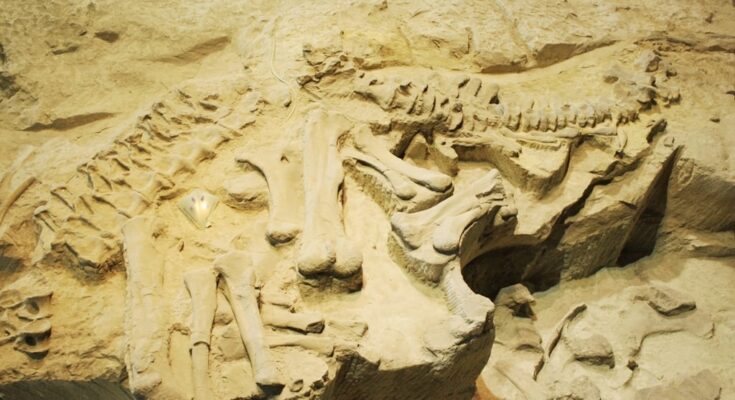One of the world’s oldest dinosaurs has been revealed after a spell of heavy rains in Brazil, and researchers think the discovery could shed light on the early days of dinosaurs and their evolutionary origins.
Torrential rains in the state of Rio Grande do Sul in southern Brazil have raised to the surface an almost intact, fossilized dinosaur skeleton, which was discovered and studied by a team led by paleontologist Rodrigo Temp Muller from the Federal University of Santa Maria.
The specimen is thought to be one of the world’s oldest dinosaurs, dating from around 233 million years ago, as reported by the Associated Press. The specimen was recovered from an area near a reservoir in the Brazilian municipality of São João do Polêsine.
Muller told AP that the study team was “surprised” to find the bones, but the discovery has not yet been peer-reviewed or published in a journal.
The dinosaur lived during the Triassic period, which lasted from 252 million to 201 million years ago. It was the era when all the continents were joined together into a supercontinent called Pangea.
It took just four days for the research team to excavate the site in Brazil fully, during which time they carefully extracted a block of rock containing the entire dinosaur skeleton. This block was then taken to the lab for further examination.
It was determined, based on the fossils, that the dinosaur measured around 2.5 meters long.
“Initially it seemed like just a few isolated bones, but as we exposed the material, we were able to see that we had an almost complete skeleton,” Müller told AP. The Brazillian researchers think it belongs to the Herrerasauridae family, which includes early apex theropod carnivores that lived during the Triassic period.
The fossilized specimen is apparently extremely well preserved and may be the second-most complete Herrerasauridae skeleton ever discovered.
Herrerasauridae is one of the earliest dinosaur families ever identified, and it dominated parts of what is now Brazil and Argentina. They were the top predators in their ecosystem and went extinct towards the end of this period.
More dinosaurs excavated in Brazil
Muller and his team have unearthed many other dinosaur-related finds in the region. In 2019, they announced the discovery of another meat-eating dinosaur from the Triassic period.
The well-preserved remains were discovered near Santa Maria, Rio Grande do Sul. What is noteworthy is that the 2019 finding, known as Gnathovorax cabreirai, also belonged to the Herrerasauridae family and lived at roughly the same time as the recently discovered specimen.
Researchers believe the recent dinosaur find could help bridge the evolutionary gap between these early Triassic predators and the later, well-known theropods like Tyrannosaurus Rex.



